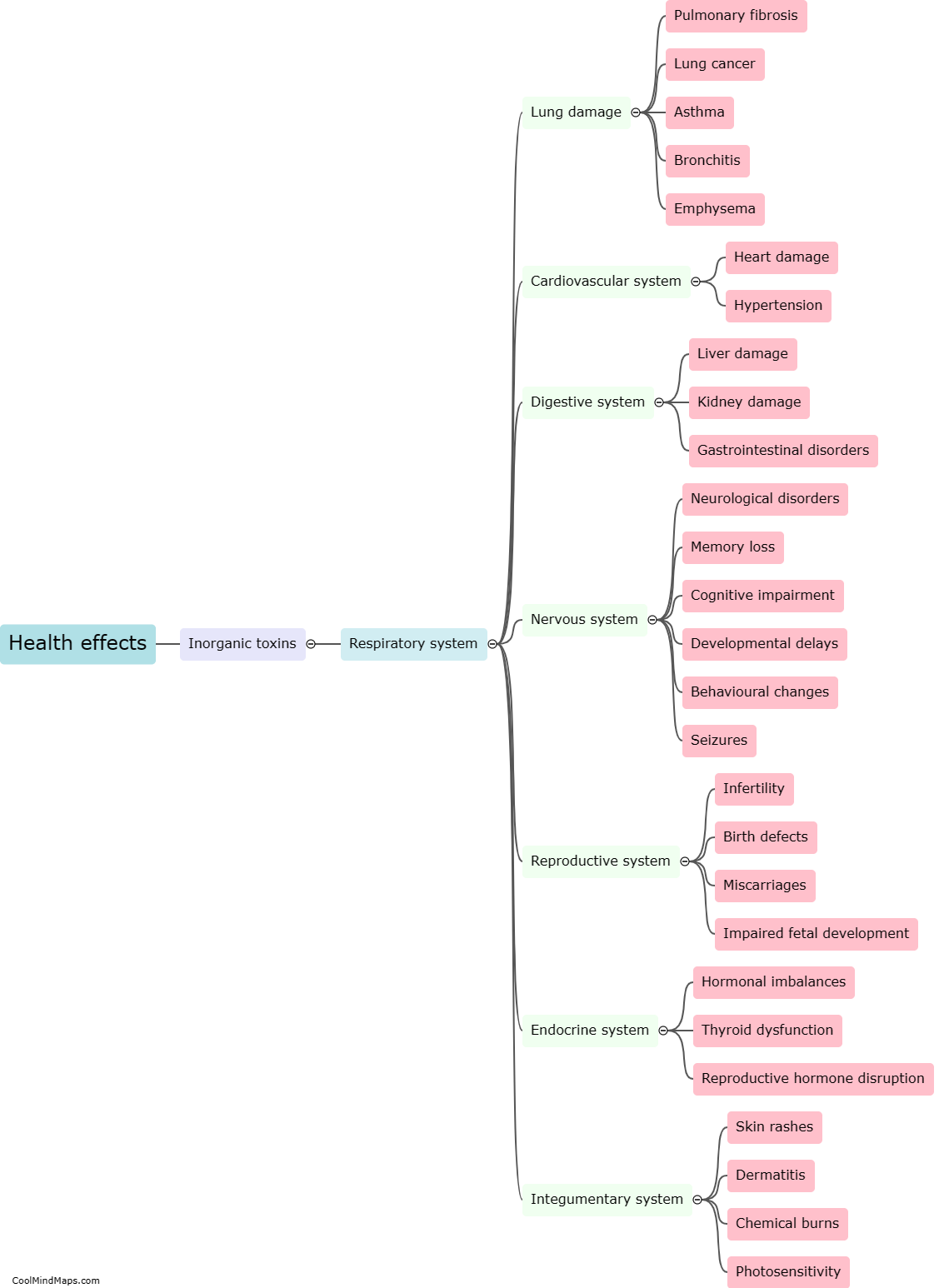How can we minimize our exposure to inorganic toxins?
Minimizing our exposure to inorganic toxins is crucial for maintaining optimal health. There are several practical steps that can be taken to reduce this exposure. First and foremost, it is important to be mindful of the products we use on a daily basis. Using organic, non-toxic alternatives for cleaning products, personal care items, and pesticides can significantly limit our exposure to harmful chemicals. Additionally, it is advisable to consume organic foods whenever possible to reduce the intake of pesticides and synthetic fertilizers. Avoiding products containing heavy metals, such as lead or cadmium, is also prudent. Regularly testing our homes for toxins like radon and asbestos can help identify and mitigate potential risks. Lastly, promoting and supporting environmental regulations that aim to minimize the release of inorganic toxins into the air, water, and soil is essential for collective well-being.

This mind map was published on 3 December 2023 and has been viewed 150 times.











